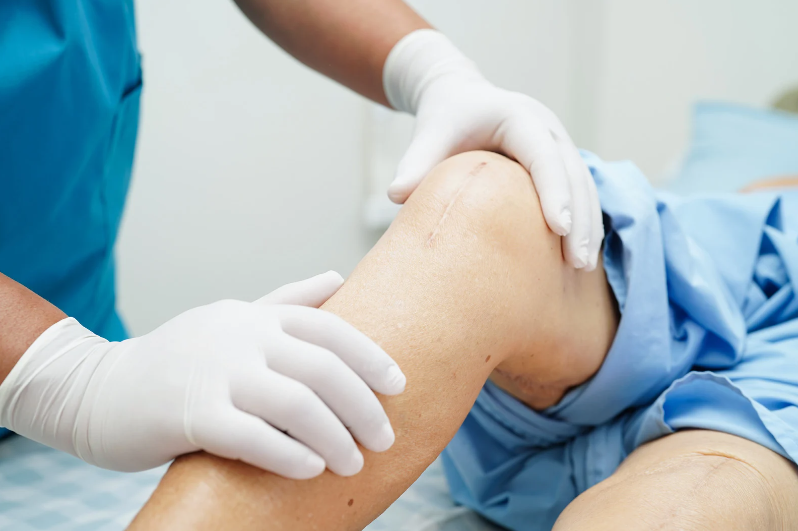Knee replacement surgery is a transformative procedure designed to relieve chronic knee pain, improve mobility, and enhance quality of life. Whether due to osteoarthritis, rheumatoid arthritis, or injury, the procedure offers relief from conditions that limit daily activities and affect overall well-being. However, recovery is a significant part of the process, and one of the most common concerns people have is when they can return to work.
While each individual’s recovery timeline is unique, several factors influence how quickly one can resume professional responsibilities. Understanding these variables and the typical phases of recovery can help set realistic expectations for when it’s possible to return to work after knee replacement surgery.
Factors Influencing Return to Work
Several key factors determine when a patient can go back to their job after knee replacement surgery. Recovery varies based on the nature of the work, personal healing pace, and medical recommendations. Here are some critical aspects to consider:
1. Type of Job
The kind of work you do plays a pivotal role in deciding when you can return. Jobs that are mostly desk-based or sedentary typically allow for an earlier return, often within a few weeks. On the other hand, physically demanding jobs, such as construction work or positions that involve prolonged standing, lifting, or heavy machinery, may require a longer recovery period.
For office-based workers, returning as soon as three to six weeks after surgery may be feasible, provided that mobility has sufficiently improved and pain is managed. However, those in more physically intensive roles should expect a recovery period of up to 12 weeks or longer to ensure their knee can handle the added strain.
2. Personal Recovery Rate
Each person’s recovery rate can differ significantly based on factors such as age, overall health, and pre-existing conditions. Younger patients or those in better physical condition before surgery may recover more quickly than older individuals or those with comorbidities. It’s essential to listen to your body and consult with your healthcare provider to gauge your unique recovery journey.
3. Surgeon’s Recommendations
Surgeons play a crucial role in determining when a patient can return to work. Following knee replacement surgery, patients typically have follow-up appointments to assess healing and mobility. Surgeons will provide guidelines tailored to individual cases, taking into account the type of work and the patient’s overall recovery progress. It’s vital to adhere to these recommendations, as they are based on professional expertise and experience.
General Timeline for Returning to Work
Understanding the general timeline for recovery after knee replacement surgery can provide helpful benchmarks. While individual experiences may vary, the following outlines a typical recovery timeline:
Weeks 1-2: Initial Recovery
During the first couple of weeks after surgery, the primary focus is on healing. Patients may experience pain, swelling, and limited mobility. Most individuals will require time off work during this period to rest and begin rehabilitation exercises. It’s essential to manage pain effectively, as this will set the foundation for subsequent recovery phases.
Weeks 3-6: Gradual Increase in Activity
As the weeks progress, many patients start to see improvement in mobility and a reduction in pain. Depending on the nature of your job, returning to work may be possible during this phase. Those with desk jobs might feel ready to engage in light duties. However, it’s essential to balance work responsibilities with ongoing physical therapy and rest to avoid overexertion.
Weeks 6-12: Resuming Normal Work Activities
By this stage, most individuals can expect significant improvements in mobility and overall function. Many patients can return to their regular work activities, although those with physically demanding jobs may still need additional time to ensure their knee is strong enough for the demands of their role. It’s important to approach this transition gradually, listening to your body and following your surgeon’s advice.
Tips for a Smooth Transition Back to Work
Returning to work after knee replacement surgery requires planning and adjustments. Here are some practical tips to help ensure a smooth transition:
1. Communicate with Your Employer
Before returning, have an open discussion with your employer about your needs and any potential accommodations. If possible, consider starting with flexible work arrangements or part-time hours to ease back into your role without overwhelming yourself.
2. Ergonomic Adjustments
Making ergonomic adjustments to your workspace can significantly enhance comfort during your return. Consider using supportive chairs, footrests, or other tools that minimize strain on your knee. This can help prevent discomfort and promote a more effective working environment.
3. Continue Physical Therapy
Participating in physical therapy during your recovery is crucial. Rehabilitation exercises not only help regain strength and flexibility but also prepare your knee for the physical demands of your job. Follow your therapist’s guidance and stay committed to your recovery plan.
Signs You’re Ready to Return
Before heading back to work, it’s essential to ensure you’re genuinely ready. Here are some signs to look for:
- Improved Mobility: If you can move your knee freely and perform daily activities without significant discomfort, it may be time to consider returning.
- Reduced Pain: Effective pain management is vital. If you experience minimal pain during normal activities, it’s a positive indication that you’re ready to resume work.
- Ability to Perform Job Tasks: Consider whether you can carry out the essential functions of your job without difficulty. If you feel capable and confident, you may be ready to return.
Conclusion
Returning to work after knee replacement surgery is a significant step in the recovery journey. While the timeline varies based on individual circumstances, understanding the factors that influence your return can help manage expectations. It’s essential to communicate with your healthcare team, listen to your body, and take the necessary time to heal fully. A gradual approach, combined with ongoing rehabilitation, will ensure that you’re prepared for the demands of your job and can enjoy an active lifestyle once again.

